JESSE COOK'S "LOOP STATION IMPROV" EXCLUSIVE
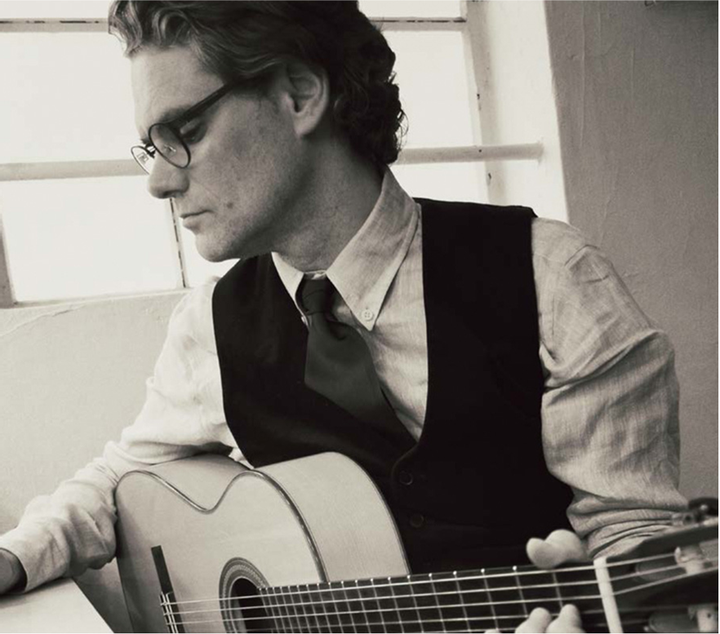
According to the Jesse Cook gang...
"World music/jazz guitarist Jesse Cook wraps up his U.S. tour this weekend on April 24. He was touring the U.S., from his native Canada, to support the release of his ninth studio album, One World, on eOne Music. The album debuted at No. 1 on the jazz and world music charts in Canada, and debuted at No. 7 on the Billboard Top Jazz Albums chart and No. 4 on the World Albums chart in the U.S. The Juno Award winner’s latest album is a sonic exploration drawing on the sounds and cultural wonders of Constantinople as inspiration, and has been lauded by critics and music fans alike."
On creating the video, Cook explains...
“I shot this video while at home in Canada between the second and third legs of my US tour. I like to sit in my studio with my guitar and a loop station and see what happens. It's like composing in real time. I try do a bunch of these every day. If I like one, I'll save it, and it might end up as a song on my next album.”

A Conversation with Photographer, Producer, Engineer Terry Manning
Mike Ragogna: Terry, you have a history of producing so many classic recording artists such as Al Green, Joe Cocker, Joe Walsh and so many more. But you’ve also had a career as a photographer, your latest exhibition being shown at The Stax Museum of American Soul, that label being one of your early bases as a music talent. In your life, what has been the creative connection between producing music and photography?
Terry Manning: That's a great question, because to me, the two art forms have a serious creative connection. Yet there are also obvious differences.
In music, I am always looking for the emotion that is first born in the artist or songwriter—something inside that's "got to come out”—and then in finding the best way to capture that emotion, distill it, enhance it if needed, and finally to translate it to the listener. Music almost always starts as an internal feeling that is bursting forth from someone. In a perfect world, I am able to capture that (record it), and by the end of the food chain, someone else has experienced it. They may love it, such as, "Wow, I've always felt that way myself, this song speaks to me!" Or, they may even hate it; but in either case you have provoked a response from someone external to the original creation of "your" emotion. What the true musical artist, composer, or producer does not want is for someone to hear the song and have no real reaction.
In my photography…and bear in mind that I do not "stage" a photographic scene, I only use a normal lens to capture what see…I am starting with something that is "already there." In this case, my job is to look at things, peer into the world, and find something that I like and want to preserve. This may be something that many people every day walk right past without a second thought; but to me, there is some element - whether bold or elusive - that I want to capture. It may be architectural, it may be compositional, it may be the colours, or whatever. The goal now is again to translate that scene, and hopefully the emotion contained within it, through the printing process to again conjure up a response from the viewer. In this case of course it is visual, not aural, but the philosophical concept is the same.
MR: You’ve photographed Jimi Hendrix, Chuck Berry, and Martin Luther King among so many others. What drew you to photography and what is your mission as a photographer?
TM: Honestly, I've been fortunate to be in many of the "right places at the right times." But that is not enough. Many of us are occasionally around great people, great performers, politicians. But my goal is always to find and record a great image…a great "look," and not just the person. The photograph itself should be visually appealing apart from the subject matter being well known! This appeal may be the angle from which the photograph is taken, it may mean moving around to find the best background, it may be deciding which area upon which to focus, what to include…there could be any number of ingredients. As I walk around on any given day, I am always scanning the scene, even almost subconsciously going through thousands of variables of what the scene could…or should…look like when the shutter is hit. Then I like to take just the one photograph, not a lot and then choose later. Cartier-Bresson called this "The Decisive Moment," and though I doubt I could ever do it as well as he did, that's the correct concept, the "mission," as you say.
But, what drew me to photography in the first place? That's sort of hard to say. I can't draw or paint well, but I love things that are artistically appealing, well constructed, and that tell a story. So my way of creating visual art ended up being photography. I was very lucky in my early days to have a great friend in William Eggleston, who in addition to later becoming one of the world's greatest photographers, is also a wonderful musician. Being around his photography, the idea of having a darkroom, dealing with different cameras, getting into the intricacies of different film stocks, different developing processes…all of it was quite intriguing to me. And there were other great photographers who would somehow coalesce around Eggleston…people like William Christenberry, Lee Friedlander, and others…that provided a tremendous "school" for me to attend, a great backdrop from which to be inspired.
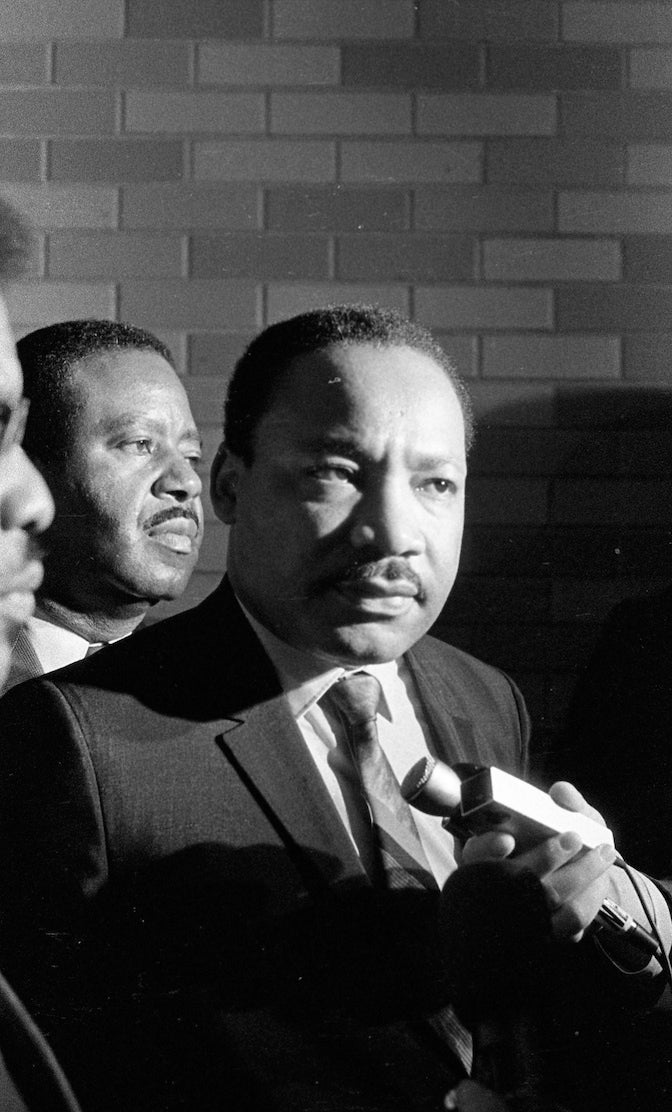
MR: Do you have any favorite stories regarding your photography? Maybe a connection you made with the artist or personality as a result of taking their photo?
TM: Ah, yes, a few. One that is both a favorite, and at the same time is terribly sad, involved Dr. Martin Luther King, Jr. I was privileged to be around this great man a few times, as he was good friends with Al Bell, one of the two owners of Stax Records and producer of The Staple Singers. Al was one of the nation's top black executives, and would occasionally have Dr King, as well as other well known political and societal figures around the Stax building. As I was Al's "partner in crime" in recording The Staples and several other artists, this meant I got to meet a lot of people I otherwise would never have known. One morning…April 3, 1968…Al phoned me and asked if I and my new car would be available to go to the Memphis airport and help provide transportation for Dr. King, his group of associates, and their baggage to the Lorraine Motel. As I walked into the airport concourse, they were all just coming off of the plane. So I walked along the hallways with the group, and happened to have a camera with me. I took 13 photos of Dr. King that day, both before and after the press came rushing up, en masse. Once everyone had retrieved their luggage, my car was part of the caravan that delivered everyone and their belongings to the Lorraine…and then I went back to the recording studio for a session I had booked. That night I went down to the Mason Temple to the rally that was happening, and although he wasn't scheduled to speak, everyone wanted him to, so Dr. King came over and delivered the "I've been to the mountaintop" speech. Then the very next day, the tragedy struck, and he was gone. I couldn't believe it…I had never been that close to a death before. I put those photos in a box, and wasn't able to deal with them until this very last Summer, when I finally edited and printed my favorite four; those are now in the exhibits and the book—Scientific Evidence Of Life On Earth During Two Millennia.
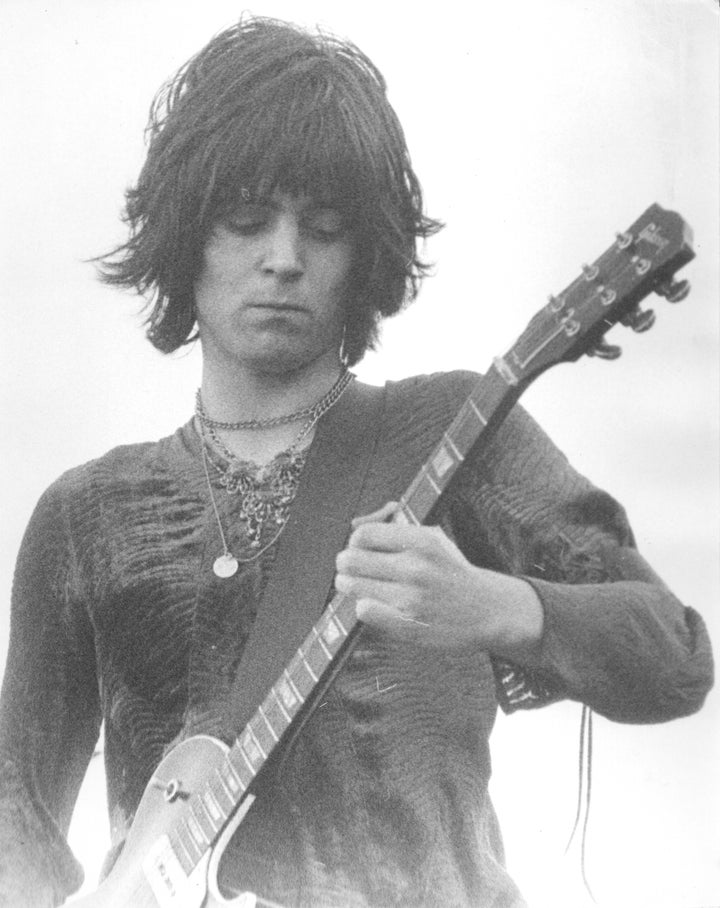
Another, but much happier connection, this time with a musical artist, was taking photos of the artist Terry Reid at The Miami Pop Festival in 1968. I was working as a photojournalist for NME in London, and also had been able to wrangle an official artist backstage pass from my friend Bill Cunningham—bass player for The Boxtops, who were also playing—and got to hang out with Terry after his show. We got on well, exchanged addresses--we have a mutual friend in Jimmy Page--and I later sent him one of the photos. He liked it so much, he used it as the cover of his second album. This has now become one of the most iconic "rock music" photos, has been on several album covers, in magazine articles, etc.
And it was always fun to photograph my good friend Lenny Kravitz, who is almost like a cousin. In fact, we are planning a book of my photographs of him for release later this year!

MR: Recently, there was a book published with your photos of Cuba. Considering our thawing relations with the country now as well as President Obama’s recent visit, what are your thoughts about the country and its people? From a photographer’s perspective, what did you try to capture while you were there?
TM: The trips I took to Cuba were so much fun. It is a country full of warm and talented people, and their commitment to the Arts is huge. I wasn't sure what to expect before I went the first time, because what we had been taught about that country over the last fifty years was pretty frightening in some ways. Would everyone there seem like captives; would they be unhappy? It is definitely true that economically they have a long way to go when comparing to much of the world we all know…wages are relatively low, and there aren't all of the freedoms we are accustomed to available to the general populace. But I found that the Cubans were proud of their country and their heritage, proud that they had made it through the hardest of times, and definitely committed to—and extremely talented in—music, dance, graphic art, and other forms of self expression. Sure, almost anyone, anywhere can find some fault with certain aspects of any government, but they did not come across as distrusting, or wanting to leave, their beloved land.
And visually, I found the place almost overwhelming. Much of the architecture is gorgeous, almost as if you were in a city in Spain a hundred years ago; but since they went through their "Special Times," the period after Russia stopped supporting them in every way, and food, gas, almost everything was in very short supply, they had not been able to renovate or keep up a lot of those beautiful buildings. So there is a strange, almost enchanting mixture of beauty and decay…which makes another form of beauty to me. Many of my photos are of buildings which are in use, being lived or worked in, and are magnificent structures except for the fact that they are in a state of disrepair.
For sure, Cuba is a lot more than a place where the cars are from the 50s! In fact there were lots of new European vehicles, most people seemed to have smartphones and large screen TVs, and commerce and tourism was bustling. But the mixture of all that with the decay was like being in a different world.
For my photographic part, I just did what I always do…I walk around and look for things I would like to document. This could be almost anything! My goal was not to just photograph a bunch of old cars—although of course there is some of that—but to find scenes that I wanted to capture artistically, using the same guidelines as I would anywhere else.
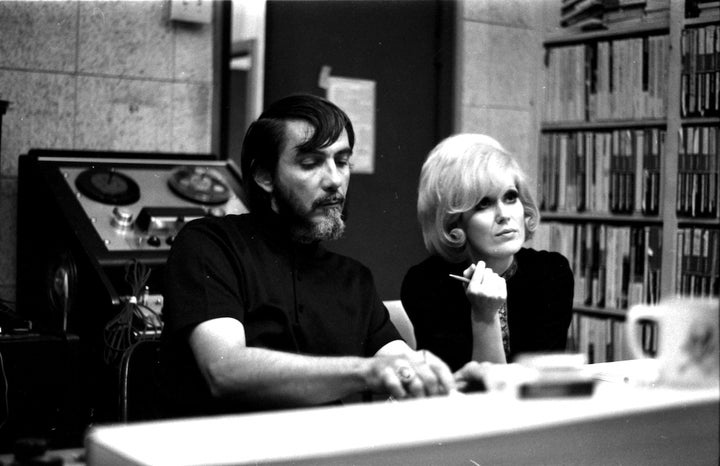
MR: As I mentioned earlier, you are also a record producer, your having worked with a lot of great talent. What got you into record producing and engineering, and who were some of your favorite artists to work with?
TM: I grew up in a musical family; my Dad, a minister, was a singer and a violinist, and my Mom was a piano teacher and clarinet player. Of course, being a rebellious kid in some ways, I wanted to listen to rock and roll on the radio all night, and I wouldn't take those silly piano lessons from my Mom—stupid me! So I talked them into buying me a guitar, and for whatever reason, just started writing songs…at the time, pretty much copies of the hits I heard on the radio. Starting at the end of Junior High, a few guys in the neighborhood who had instruments would get together and we formed what we called a band. This was in El Paso, Texas, and that city had its own favorite son, a local star named Bobby Fuller. We all idolized Bobby, and thought he was probably the biggest star in the world. Of course, at the time he was just big in our local Southwest area, but we didn't now that. Once, Bobby's band played for our Junior High school dance and I went up to him at the end of a set, introduced myself, and asked Bobby if I could sit in. I didn't realize this was a little presumptuous, but he was extremely kind, and stayed while the rest of the band took a break to let me play and sing with him on a couple of songs! We did "Peggy Sue" and "Donna," just me singing, and the two of us playing guitars. That got me more excited, and I started phoning Bobby regularly or going by his place to ask questions about music, how a record was produced, how you got on the radio, etc…all very naive stuff! But again he was kind and patient, and told me several things that I still use philosophically to this day regarding music production! He was way ahead of his time, and of course later moved to LA where he did become a big star with international hits—“I Fought The Law," etc.. But he was sadly and mysteriously murdered not terribly long after.
A bit before he went to LA, my Dad moved us to Memphis, and as soon as I could do so I took my guitar and headed over to Stax Records, where I was lucky for reasons of fate to meet Steve Cropper, who also was very kind, and eventually took me back to their tape copy room to intern after school. And almost concurrently, I got in a local Memphis band, and we ended up at John Fry's home studio…he and Fred Smith—FedEx founder—had a local record label called Ardent, and we signed to it. John ended up as another kind mentor, and I became the first Ardent employee when we moved to a commercial studio location!
As for a "fave artist" I've worked with that is difficult…it's sort of like, "Which of your children do you love the most?" You pretty much love them all! BUT, it is easy to pick out Led Zeppelin, the LZ3 album; ZZ Top, all of their hit albums; The Staple Singers, most of their hits; and of course, Lenny, all for obvious reasons. But I was so lucky to work with and around so many talented people, the choice is dizzying!
MR: What do you think of the state of R&B or soul music in 2016?
TM: Wow, it is almost totally different! In fact, you almost need new definitions for those terms! Part of the difference probably stems from the fact that so much of recorded music today is programmed, whereas all of it "in the day" was played by amazing players, interacting with each other and with the vocalist in real time. When I think back about the groups of absolutely incredible musicians we had available every single day, in Memphis alone, it is stunning. All of the MGs for instance—Booker T, Steve Cropper, Duck Dunn and Al Jackson, Jr.—were just the best there could be. Then there was the Hi Rhythm section, including the three Hodges brothers, the guys at American Studios [The Memphis Boys: Reggie Young, Tommy Cogbill, et al), The Memphis Horns: Wayne Jackson, Andrew Love, etc.] not to mention Isaac Hayes and so many others…just WOW! Couple those greats with super songs and incredible singers like Al Green, Otis Redding, Mavis, Eddie Floyd, and so many others - it was an amazing musical genre to get to be a part of.
There are good things being done in today's R&B/soul as well, but it is different somehow. Many of the people "trying" to recapture the actual sound of the golden era don't really know how it was done; there seems to be a scarcity of great new songs; and overall it just doesn't move me like it used to. Sometimes I wonder if the fact that many of the early artists learned and honed their craft live in the Southern black churches—and that doesn't appear to be as strong an influence these days—is another factor. In church, the singers had to get people going, to get that emotional reaction…it was a great music school!
MR: Do you have any favorite projects as a record producer or engineer?
TM: Another tough one to pick! Some I mentioned earlier, like "Eliminator" by ZZ Top, becoming one of the biggest albums in rock history, that was great. The fact that Led Zeppelin III is looked on as such a seminal recording historically is another good one. Also, having several productions/recordings become big over time has been rewarding. Jason & The Scorchers, for instance…we did okay selling them when it first came out, but these days there is an almost cult-like reverence for that music we did. Also, of course, Big Star took many many years before its brilliance was universally recognized, but today, their legacy is huge.
MR: How about in photography? Did you have any favorite subjects and why?
TM: A couple of those I mentioned earlier as well, like MLK of course. But my very fave thing photographically is to go back over time and "re-live" the scene. Sometimes I will open an old box of negatives from 30 or more years ago, and suddenly, when I look at one shot, I am immediately transported back in time to when I first chose that very scene to document…there was a reason I took the photo in the first instance, and it is an awesome experience to see it again, without having seen it at all for ages! Very transformative.
And again, I try to only photograph things I truly want to capture…it could be almost anything…something mundane perhaps, except that when photographed "just right" it turns into something suddenly artistic. So my favorite subject could literally be anything, in the right setting.
MR: Are there other creative fields that you devote time to?
TM: Ha, these two pursuits, both now full time careers, pretty much take my time! I do other things too though; I have a company that makes equipment for recording studios - microphones, EQs, compressors, etc.--and that also takes a lot of time and effort.
But mainly, I like most to compose my own original music, and do my own photography—I print everything myself, that is also very time consuming)—and do the recording gear, and hopefully have a little time to work out most days!
MR: What is your advice to new artists?
TM: Run away, while you still can! Ha, no, seriously, it is harder than ever to get into music recording, as an artist, or in any supportive capacity, because the music business has shrunk these days. Downloads simply do not pay as well as selling records and CDs used to, and “free”--stolen--downloads don't pay at all. Plus anyone now being able to own a so-called "studio" in their laptop has reduced business going to the recording studios. So there just isn't as much money available from the labels/investors as there used to be; and that passes down the line to all support industries…music stores, rental houses, road crews, manufacturing plants, even restaurants and hotels. That means there are fewer openings for creative people to work. What I would suggest is to learn everything you can about the field you most are attracted to. If that is engineering, learn from a mentor, or go to a school such as Blackbird Academy. But also learn the tangential things…get some real music theory instruction, learn the business aspects, contracts, etc. And vice versa, if trying to be a musician, also learn about engineering, mastering, business. You will need to be multi-talented to be a multi-tasker these days!
And if possible, find a good studio to intern in…you will learn best when observing qualified people who are already doing the job!
MR: What is your advice to budding photographers?
TM: First and foremost, study great painters! The masters, who were of course creating their scenes from nothing, were so great at composition, at lighting, at choosing what to paint and what not to put into the picture. Study architecture…lines, forms, the way things come together when everything is working well with every other element. Then go out and shoot…give yourself specific tasks to accomplish. For instance, try to capture certain convergence of lines and forms…the photo doesn't have to be great or perfect now, but you are training your eye, training your mind. It needs to become second nature to instantly "see" a scene the way you want it captured. If you are going for "The Decisive Moment," you don't have time to be messing around! Become one with your camera…know it instinctively, for the same reason; you must shoot quickly if being a documentarian, there is often no second chance.
MR: Are there any projects you can’t wait to get to and what’s up in your future?
TM: Oh, so many things! My next scheduled photographic exhibit—The Stax Museum one is up through the end of June—will be at The 2016 PVDFest in Providence, Rhode Island. This is a music and arts festival in the downtown area sponsored by The Avenue Concept and The Dean Hotel and Gallery. After that will be an all-Cuba photo exhibit at Germantown Performing Arts Center in Tennessee, in conjunction with The Havana All Stars musical group. And here are exhibits now being scheduled all throughout the world over the next 5-6 years, and two more photo books coming soon!
Musically, ECR Music Group of New York will soon release Planets by 3@Sea, featuring ten of my original jazz compositions. And I am working on producing albums by a great rock group called Helforstout and a super country singer Ciera Ouelette, as well as some of my own original classical compositions.
For sure, I won't be resting very much over the next few years!
For more info: http://www.TerryManning.com
ENSEMBLE MIK NAWOOJ'S THE FUTURE OF HIP-HOP ALBUM PREMIERE
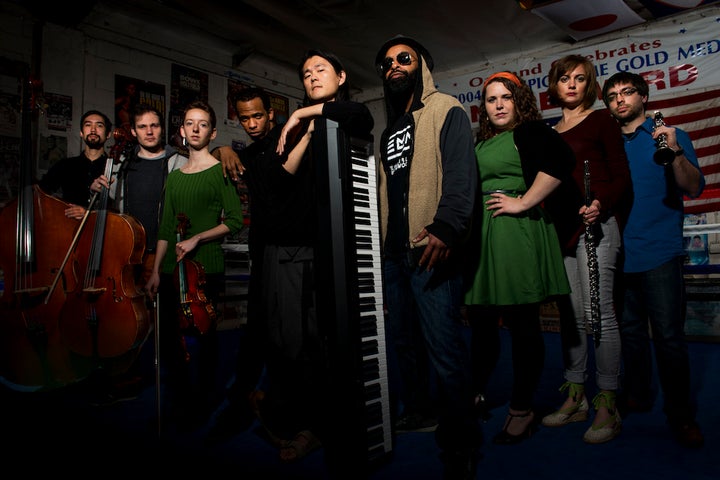
According to Enemble Mik Nawooj's JooWan Kim...
"This album is our statement in saying, 'Hip-hop is the new great American indigenous art music and we're on the cutting edge of it.' For the majority of this album, I deconstructed and re-imagined hip-hop classics from both East & West Coast by extracting essential musical elements from the originals, stretching, and then re-organizing them. The results are familiar but completely new. In addition, the lyrics, while paying homage, were also updated by our resident MCs Do D.A.T. and Sandman. Included in this album is the ESPN commissioned 'California Soul' for the network's 2016 NFL Super Bowl programming."
DEAD 27s' "DON'T WANT TO LIVE MY LIFE WITHOUT YOU" EXCLUSIVE
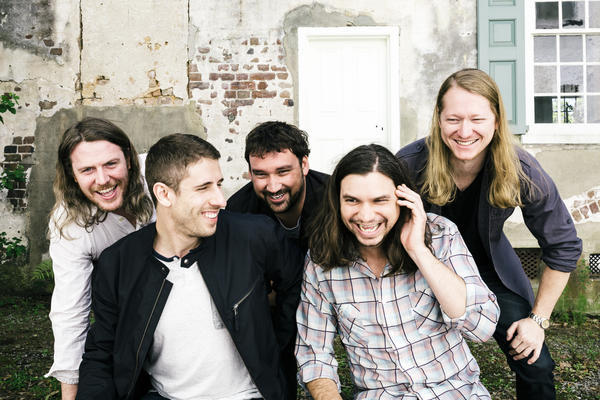
According to Dead 27s' vocalist/lyricist, Trey Francis...
"The song is about that feeling of having a crush on someone and having no idea how to make the first move, but you want to so bad and it's killing you inside. It's a fun tune to play live, and it's definitely the one we've seen people sing the words to the most."
The band's guitarist/vocalist/composer Wallace Mullinax adds...
"'Don't Want to Live My Life' has a very clever chord progression. The harmony echoes it's '70s tilt, while the rhythm is pure four-on-the-floor soul. We wanted to tip our hat to traditional American songcraft while maintaining a very danceable first impression."
BENCOOLEN'S "IN COLOR" EXCLUSIVE

According to Bencoolen's Ted Scott...
"'In Color' is a song that Teddy wrote leaning into his recent reggae influences. The song is intended to call into question what living our lives is all about. We are musicians, and we get asked by many people why the struggle of an independent musician is worth it. It is our passion and our purpose to perform. Without music, we would be living a life without color. Seeing you dance, play air-guitar, and sing along is why we play. To convey this, we tell the story of a boy who grows up into a sad but successful man. He has means but no purpose. On a night out, he talks with a bartender and a man who is a projection of his fate, helping him reflect for a moment on his situation. The subject of the song may be sad, but the message is a happy one. It is meant to turn heads with its tight harmonized intro, It’s meant to get you dancing, and it’s meant to make you feel alive."
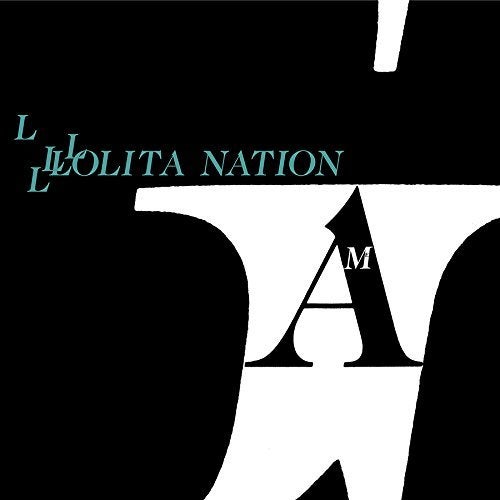
Discussing Game Theory's Lolita Nation with Dan Vallor
Mike Ragogna: Dan, Omnivore released a deluxe version of Lolita Nation. In your opinion as a reissue producer, why do you think this album is important?
Dan Vallor: When Lolita Nation was [originally] released, the underground/independent musical landscape was splintering from its post-punk/new wave roots and beginning to transition into camps that no longer flowed from a common musical lineage. Industrial music had become a dance genre, some new wave, punk and power-pop artists were leaning towards rootsier music that foreshadowed the alt-country movement, punk purists had caved to a rigid hardcore ethos and then there were a number of bands like Husker Du, Sonic Youth and The Minutemen who went about carving something both familiar and groundbreaking out of the ashes of punk and post-punk. Those bands had more in common with one another than any of them did with Game Theory, but they shared with Game Theory a searching nature. And with Lolita Nation, Game Theory’s Scott Miller aimed to create a major work, not really a concept album but a record brimming with new ideas, experiments and more remarkable songs than one could fit onto a single LP. Where Husker Du, Sonic Youth and The Minutemen all had punk at their foundation, by the time of Lolita Nation, Game Theory was looking back further, to the art rock of the 1970's--Eno, David Bowie and Roxy Music, whose Remake/Remodel was an undeniable influence on "The Waist And The Knees”--as well as avant-garde movements like musique concrete, cut-ups and sound collages. These influences combined with Scott's remarkable gift for pop songwriting, rooted in his love for The Beatles, Big Star and The Monkees, to form the foundation of Lolita Nation. While the album was a significant leap, sadly it served only to transition Game Theory's fanbase from a small cult following to a mid-sized cult following. College radio embraced the album, critics either loved the record or were confounded by it. I recall some thinking the experimentation was the dominant musical element of the record while the collages and sound experiments form only a small fraction. In the end, the band went from playing empty clubs to packed houses, but while major labels inquired, a deal was never offered. In the years since, the album has come to have legendary status among fans. Copies were showing up on eBay for $100 as it sat out of print for 25 years. It's an album that I believe has a substantial audience who don't know they love it yet, they're just waiting to be introduced.
MR: Lolita Nation, Game Theory’s fourth album, was recorded with a lineup change. Specifically, how did that change the sound and what do you think that added to the mix?
DV: The Lolita Nation lineup was essentially the third Game Theory lineup. While the two prior lineups had similar instrumentation and temperaments, in transitioning to Lolita Nation, Scott turned that template upside down, enlisting second guitarist Donnette Thayer and bassist Gui Gassuan, who brought a much tougher sound. With Scott and the band's extant keyboardist Shelley LaFreniere, who was always a kind of art-kid secret weapon, and drummer Gil Ray, who is remarkably versatile and can play with as much elegance or power as the music demands, the band became a powerful unit able to jump from ornate musical figures like those in "We Love You Carol And Alison" to intense onslaughts, like "The Waist And The Knees." Scott also decided to tap the songwriting talents of his bandmates with all but Gui contributing songs to the album. It was still very much Scott's vision; he seemed to always have most of an album worked out in his head even prior to rehearsing, and in the case of Lolita Nation, some of the material was just being introduced to the band as the tape rolled. The band recorded a number of songs as a rehearsal tape to send to producer Mitch Easter to let him know what was coming. On "The Waist And The Knees," that tape has Scott playing the song to the band solo and telling them it will be much different when fully realized; when the band was in the studio recording the song, the rough mixes have Scott calling out instructions for changes as they play through the take that was eventually mixed for the released album; both of these variations appear as bonus tracks on the double CD remaster.
MR: The new release includes another 21 tracks in addition to the original 27, and they include many covers of acts ranging from Joy Division to Bowie. In your opinion, what do these rarities reveal about the band? What kind of insight do they give as to what happened in the studio and how they tell the bigger story of the band’s musical evolution? And what’s the story behind the long version of “Chardonnay”?
DV: Back in 2010, 125 Records released the first edition of Scott's book "Music: What Happened?" that was a survey of songs that Scott loved from 1957-2009. The book is basically Scott's love letter to the music that inspired him growing up and on through adulthood. Scott was unashamed of his love of other artist's work and had the originality and confidence in his own work such that he really didn't feel the need to deflect or deny comparison when critics would cite them. Scott was writing songs of his own since he was in his early teens, I believe even as a pre-teen, and never played in a proper cover band, but he loved to mix covers into live sets as homages to the music he adored. In a time when covering The Smiths or Joy Division might have been seen by many bands as odd, or uncool, Scott was thrilled to do that. And while some of the covers are faithful--even while they're unlikely covers for Game Theory…"Public Image" comes to mind--others, particularly the acoustic cover of Sex Pistols' "God Save The Queen," are simply out of left field. But all are, in a way, reverent…all are done with love, free of irony. Even as Scott mimics Jonathan Richman's idiosyncratic vocal style for a verse of The Modern Lovers' “Roadrunner,” it's with affection.
As for “Chardonnay,” back in 1987, when Lolita Nation was released, the general thinking in the music industry was that the capacity of a CD was about 74-75 minutes. Scott had the album mapped out in its entirety, and with the full-length version of “Chardonnay,” Lolita Nation clocked in at just under 80 minutes. A year later, Rykodisc would break the barrier releasing a Mission Of Burma compilation that nearly hit the 80 minute mark…but that was something thought impossible when Lolita Nation was being mastered. In those days, bonus material was something labels provided on CDs and not LPs, so I can't imagine the thought of putting the long version on the vinyl LP (where there was space) and shortening the song for the CD would have crossed Enigma Records’ mind. So the song was trimmed. I can't say I disagree with Scott's decision at the time; of the many should-have-been hits Scott wrote with Game Theory, “Chardonnay” is towards the top of that list. If radio--college or otherwise--was to embrace the song in 1987, it really couldn't be 8 minutes long. While we discussed using the long version on the reissue, we decided to maintain the album as it was released in 1987, but with a sparklingly brilliant remaster; not to switch around the versions of “Chardonnay,” which would render it a different record than the original. I feel the shorter version is just as valid as the long version and to many who have loved the album for decades, it's an integral part of experiencing the record. The long version seemed to Pat [Thomas], Cheryl [Pawelski] and I as the perfect track to kick off the bonus disc; fortunately Mitch Easter had kept a reel with the long version on it, as it wasn't found when we retrieved the reels from Rational Records' Scott Vanderbilt.
MR: Why do you think the album—and the group—were and still are so revered? What did Game Theory bring to the mix that no other band did?
DV: It an interesting question and one I have a couple of theories about. Ironically, I think that the band's relative commercial failure in their time saved them from being labeled an '80s band; I would argue they were ahead of their time, though I'll admit I'm biased. They didn't have that arc where a band has one or two commercially successful songs followed by a commercial wind down, so no one is going to think "Game Theory=1980s rock," just as I'm guessing people don't think of Big Star or Nick Drake as emblematic of 1970s rock. Additionally, I think that Scott never wrote ‘down’ to people to gain commercial traction. He was an incredibly smart lyricist and incredibly clever with a melody; writing songs that could have been released in 2015 without anyone perceiving them as outdated. This quality of work has only served to slowly build a passionate and devoted following for Scott's work with Game Theory and The Loud Family. The fact that this record was released in the midst of the indie fanzine boom and close enough to the dawn of the Internet age, meant that there was very little drift of attention within the fanbase as Scott dissolved Game Theory and formed The Loud Family. Additionally, the fact that Scott has amongst his admirers/fans some incredible songwriters in Aimee Mann and Ted Leo--who connected to form The Both out of mutual admiration of Scott--The Magnetic Fields Stephin Merritt, The New Pornographers' A.C. Newman, Guided By Voices' Robert Pollard, Okkervil River's Will Sheff and many more, demonstrates the enduring strength of his music and recordings.
MR: There’s so much about Scott Miller’s writing that fans admired. What are your some of those favorite aspects and what are your thoughts about him these days?
DV: I've always loved the way he could cut to the core of complex emotions both lyrically and musically, with an elegance that I've seen few parallel. It wasn't something he was all that good at in life, but it was a great gift he had in his music. And he could pen a lyric so layered that, even for someone who knew him and the music well, and was sometimes there as it came into existence, it could continue to offer something new and different, a new interpretation, on each subsequent listen. There are songs he's written that deliver something really special on first listen and then the song sits and waits for the listener, the fan, to learn more about life, or literature, or some key that will offer a new and different way of understanding the song that takes nothing away from the initial wonder the song offered. A later song, "Asleep and Awake on the Man's Freeway" from The Loud Family's "Interbabe Concern" is essentially a tale of breakup, it's followable as a lyric of loss. The song looks back at things disintegrating as the lyric then begins to refract those feelings through metaphors of relativity and theoretical physics, strangely adding pathos to the lyric. His songs are full of those twists and, for lack of a better metaphor, Easter eggs.
As for my thoughts about Scott today, I miss him tremendously. His many friends, including myself, struggle with his loss deeply. It's the kind of loss that offers no peace. For a long time after he died, many friends and fans I talked to couldn't listen to his music; it took me from his death in April to July before I could listen again, only after a group of friends and fans convened a memorial in Scott's hometown of Sacramento. But there was an agreement between he and I that I would take over the effort to get his music back in print as it was too frustrating for him, and for me that agreement, that promise, didn't die with him. So in time, when I was prepared, I began again and I eventually started working with Omnivore Recordings on the Game Theory reissues. For the project, to make it the best it could be, I needed to immerse myself in his music, sorting through countless tapes to compile bonus material, approving masters, etc. and that partially numbed the emotional impact of listening to the music again, though not reliably or consistently so. Still, just hearing interview snippets or on-stage banter on a tape triggers sadness and reminds me, and I imagine all of his friends, of talking to him. It's something you don't think about when you think of artists who have gone, the impact that just hearing the inflection of their voice on tape has on the people with whom they were close. My wife remarked at one point that for months on end, all she heard from the office I work out of is Scott's voice drifting down the stairs all day, and how haunting that could be. But I have happiness that his work is getting a second chance, that there are people hearing it for the first time and loving it. It would have made Scott tremendously happy and that's rewarding, even in his absence. I've read through old letters and notes between us dating back to the '80s and '90s, and in one he talks about trying things with sound, worrying that his excitement that he's done something interesting will eventually be deflated by a response that sees it as too strange. It wasn’t that he would hesitate to go forward with his ideas, it was a concern that they wouldn't matter in the end. He knew there were a goodly number of people listening, but I think he feared that there was a wall between himself and new listeners and the fact that his work was so often unavailable made that wall seem sometimes insurmountable. He loved his fans, but an artist wants their work to reach everyone who might appreciate it, if they say they don't they're not being honest with themselves, that's what creativity is all about.
MR: What kind of influence do you think Game Theory has had on music over the years and which bands do you think were most inspired?
DV: I was talking to Stephin Merritt of The Magnetic Fields some time ago and he joked about a time before The Magnetic Fields when he was just trying to write Scott Miller songs. I think there are a lot of smart songwriters out there, some of whom are quite successful and quite vocal about the inspiration Scott has given them. Will Sheff went so far as to say that even before he heard Scott Miller, he'd been influenced by him through the influence Scott had had on the songwriters that inspired Will. I've mentioned earlier some of the songwriters who have openly acknowledged their appreciation of Scott, but there are others who come from places you might expect and places you wouldn't guess in a million years. I know Elliot Smith sought out Scott on a tour stop in the Northwest to express his fondness for Scott's work, I've heard that the singer of a quite successful blues rock band considers himself a Game Theory fan, but have never met the man so I can't confirm if that's fact or rumor. There's also a great story I heard about the guitarist for a very successful 80s-90s glam metal band who recorded for Enigma at the dawn of their career, trying out a guitar in a music store by playing a rather complicated solo of Scott's from Game Theory's song "Wish I Could Stand Or Have" from 2 Steps From The Middle Ages.
MR: What advice do you have for new artists?
DV: Based on my experience and my view of the modern musical landscape and the ruins of the music industry, if you're doing it for any other reason than creative drive, don't bother. The days of rock stardom, adoring fans, and financial rewards have collapsed under the weight of media over-saturation, free access to music and the growing perspective that many consumers hold that music is free for the taking, or at least should be; that bands and artists should be grateful for the appreciation they get if people actually listen to them. This may sound tremendously cynical, but there's a growth industry out there that is centered around re-imagining music as a sort of virtual product that can be tied to on-line sites and apps with advertising creating the revenue. But none of that revenue, that worth, is attributed to the value of the music. So you have people making millions, potentially billions, by offering music at little or no cost and claiming that it's the site, or app, that provides the value and not the content. In that sort of climate the days of a career in music are quickly coming to an end. But art--music, film, literature, etc.--remains one of a handful of things that can genuinely elevate our lives from the mundane to the sublime, that can truly provide us with awe. To be a part of that, an honest and committed part of that, is virtuous. So if you have it in you to pursue it, accepting that no reward and no audience is the likeliest outcome, do it. And if you love music and art and find your life elevated by it, then patronize it, pay fairly for it, allow it to flourish and fight all efforts to devalue it.
So basically, a lesson can be learned from Scott and Game Theory in this: follow your heart, your muse, your gift. Write and record as an artist and not a commercial endeavor…the latter will almost certainly leave you unrewarded and bitter, the former will give you a body of work you may not make a dime from but you'll still have your dignity and, who knows, you may change lives with your music along the way.
MR: Twenty years from now, do you think Lolita Nation will still be considered one of the great albums?
DV: I think, I hope, that twenty years from now Lolita Nation will be considered one of the great albums by more than just the wonderful, smart people who recognize it as that today. I'd like to see it embraced as a true classic. I think it and Game Theory have earned that, of course earning and getting are not the same.
[NOTE: Dan Vallor was the reissue producer for the deluxe edition of Game Theory's Lolita Nation.]
VINCENT COLBERT'S "COURAGE" EXCLUSIVE

According to Vincent Colbert...
“This is a song for artists, creators, or anyone trying to accomplish something or make something of their life...all of us!. I remember one night I was so overwhelmed and wanted to quit doing music. It seemed pointless and thoughts like 'Why bother?' and 'Who even cares?' ran through my head. I sat down on my bed, picked up my guitar, and wrote this song. The act of writing this song gave me the courage I needed to get through the night and keep going the next day. I hope it can provide some hope and encouragement to others as well."
SHIPS HAVE SAILED'S "CRIMINAL" EXCLUSIVE

According to Ships Have Sailed's Will Carpenter...
"'Criminal' was originally recorded with some very cinematic production for our album Moodswings and was a very short track, more of a transition to connect the first five songs with the second half of the album. It was surprising to me when so many people online started shouting it out as their favorite track...and it got my wheels turning, especially when the most common question was: 'Why does it only have one verse?' When re-imagining this song for our new acoustic EP Whispers, I found myself with a rare opportunity to give a large number of our listeners exactly what they wanted...so instead of just stripping down the arrangement, we decided to extend it as well. The second verse adds a dimension to the track that we felt was hidden in the first version...but then, you can judge for yourself!"
BEN DE LA COUR'S "DOWN TO THE WATER'S EDGE" EXCLUSIVE
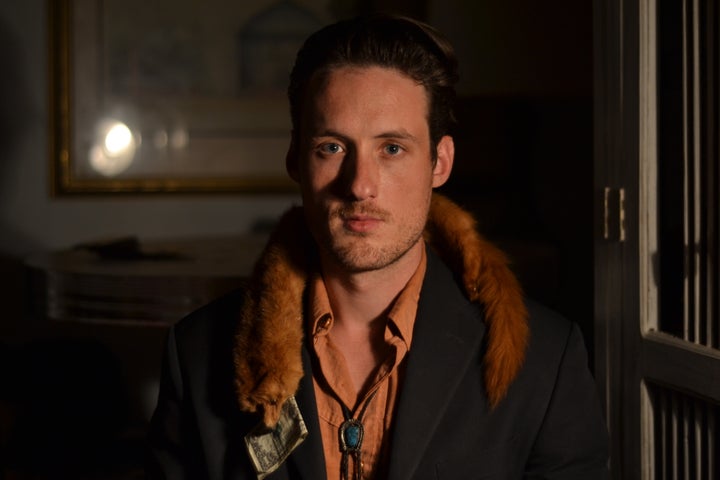
Brooklyn-born Ben de la Cour offers up the video to his first single, “Down to the Water’s Edge,” the song taken from his forthcoming album Midnight in Havana. Directed by Jay Wasley, the video evokes the fine line between love and obsession. The album and comes ahead of his "Americanoir" tour beginning April 22 in Chapel Hill, North Carolina. The song's recording is offered as a free download and the album is already available for pre-order on iTunes.
According to Ben de la Cours...
“I didn't want it to be just another boring vanity project where I'm walking through some lonesome field with my guitar. Jay and I are both huge horror movie fans and I'm really into David Lynch. I love the way he uses the suggestion of a linear plot in his movies, kind of like a writer would. I wanted a scenario that would allow viewers to draw their own conclusions. We filmed it over the course of a few days in a barn out in the boonies, not far from Nashville.”
JASON ACHILLES MEZILIS' "PANHANDLE" EXCLUSIVE

According to Jason Achilles Mezilis...
"I was on an indie film shoot about a year ago playing a low rent gangster or something, alongside this guy who just looked absolutely crazy / awesome...we hit it off, and by the end of the day I looked at him and basically said "I don't know how, when, or where...but I'm getting you in a music video of mine". Fast-forward a few months and we drove out on a Saturday just past the Mojave Spaceport out here in California, pulled over to the dusty side of the road on a windy day, and our director David [Urbanic] did a brilliant job capturing Micah (the cowboy) doing what he does best, looking pensive and fantastic. Since then, Micah has been all over the place on film/tv, etc. As far as the video itself, yes there is a specific narrative in there...and no I'm not telling [ha!], one or two clues you gotta look closely...think Jim Jarmusch doing an episode of 'The Twilight Zone.'"
ZMEI3'S ROUGH ROMANIAN SOUL PREVIEW (FYI FILMED IN TRANSYLVANIA!)

According to Grammy-winning producer Ian Brennan...
“The album was recorded in the mountains of Transylvania, just spitting distance from Dracula’s Castle. Zmei3’s lead-singer, Paula Turcas, often describes going into a 'trance' while singing and 'not remembering' what happened during performances afterwards. Her physicality is evident here in this live-recording video, as her face turns flush and she spends as much of the time bent and broken, as upright, wrenching maximum emotion from every note.”
GOODBYE PRINCE, THANK YOU FOR THE MUSIC AND INFLUENCING GENERATIONS OF ARTISTS
It seems like everyone's writing big obits on Prince, and rightly so considering he touched millions of lives with his crazy, innovative, musical genius. But instead of going large, I'm just posting this simple video of brother and sister artists Gemma Cohen (Dagmar) and Jonnie Cohen (Paa Kow guitarist/percussionist) performing "When Doves Cry" when they were teens. Thanks, Prince. You worked ridiculously hard, now you get to rest a little. The kids will take it from here...
